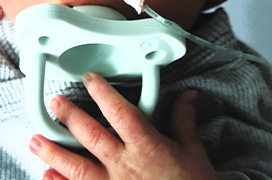Aim: Evaluation of screening and treatment of retinopathy of prematurity (ROP) at the Department of Pediatric Ophthalmology.
Material and Methods: Retrospective evaluation of the medical records of premature babies, born in the period 2012–2022 and treated at the Neonatology Department and the Neonatology ICU at the University Hospital Brno. On average 150 children annually are put forward for screening of ROP. A total of 1694 premature infants were examined during the 11-year monitored period.
Results: There were 100 patients who reached the stage of ROP requiring treatment, and the results showed that the most endangered group were those with a birth weight below 1000 g. The gestational age at the start of therapy was also assessed. Treatment of ROP was most often carried out by means of a combination of laser photocoagulation of the retina and intravitreal application of anti-VEGF (35 patients), as well as monotherapies: application of anti-VEGF (30 patients), laser photocoagulation of the retina (28 patients) and cryotherapy (2 patients in total). None of the patients reached ROP stage 4 or 5. The number of patients in need of treatment in the past three years has decreased significantly.
Conclusion: The article documents the screening and trend in the treatment of retinopathy of premature infants in recent years. Of interest here are the changes in the incidence of ROP from 2020, which reflect the positive development of neonatological care.
Retinopathy of prematurity is still a disease that can lead to blindness of premature infants, but early screening and treatment can prevent this. Progress in the care of newborns born prematurely is also positively reflected in the incidence of this serious disease.

